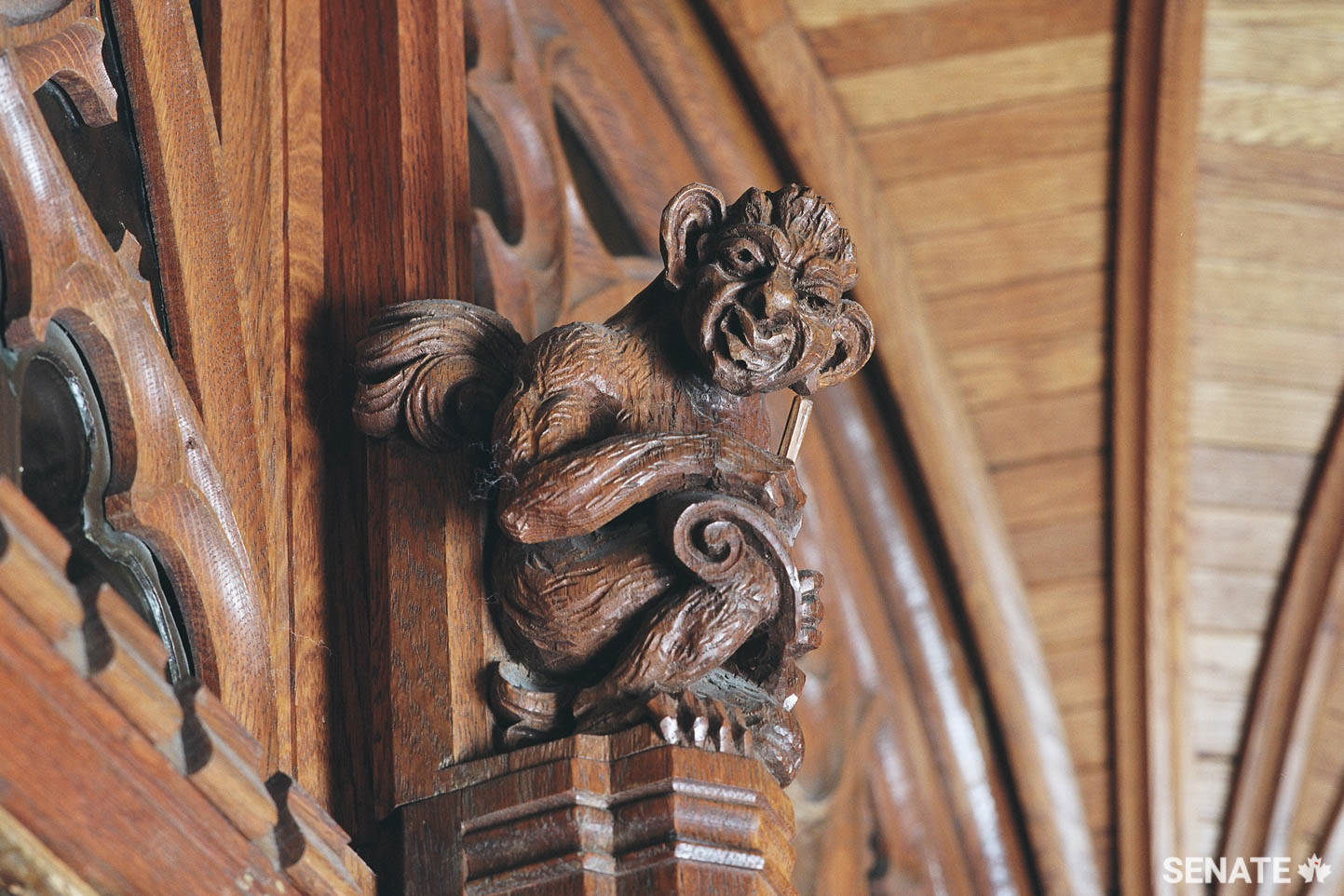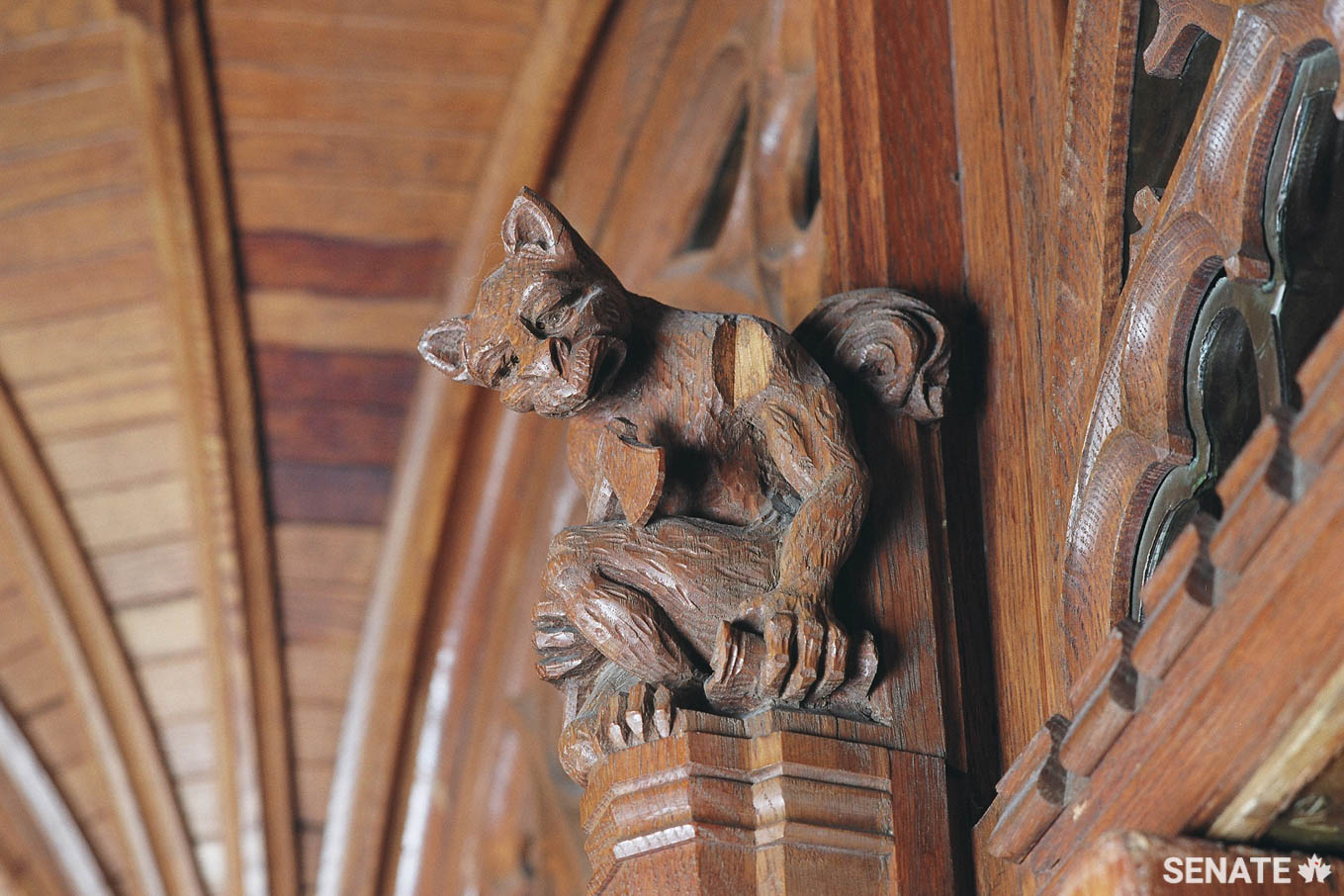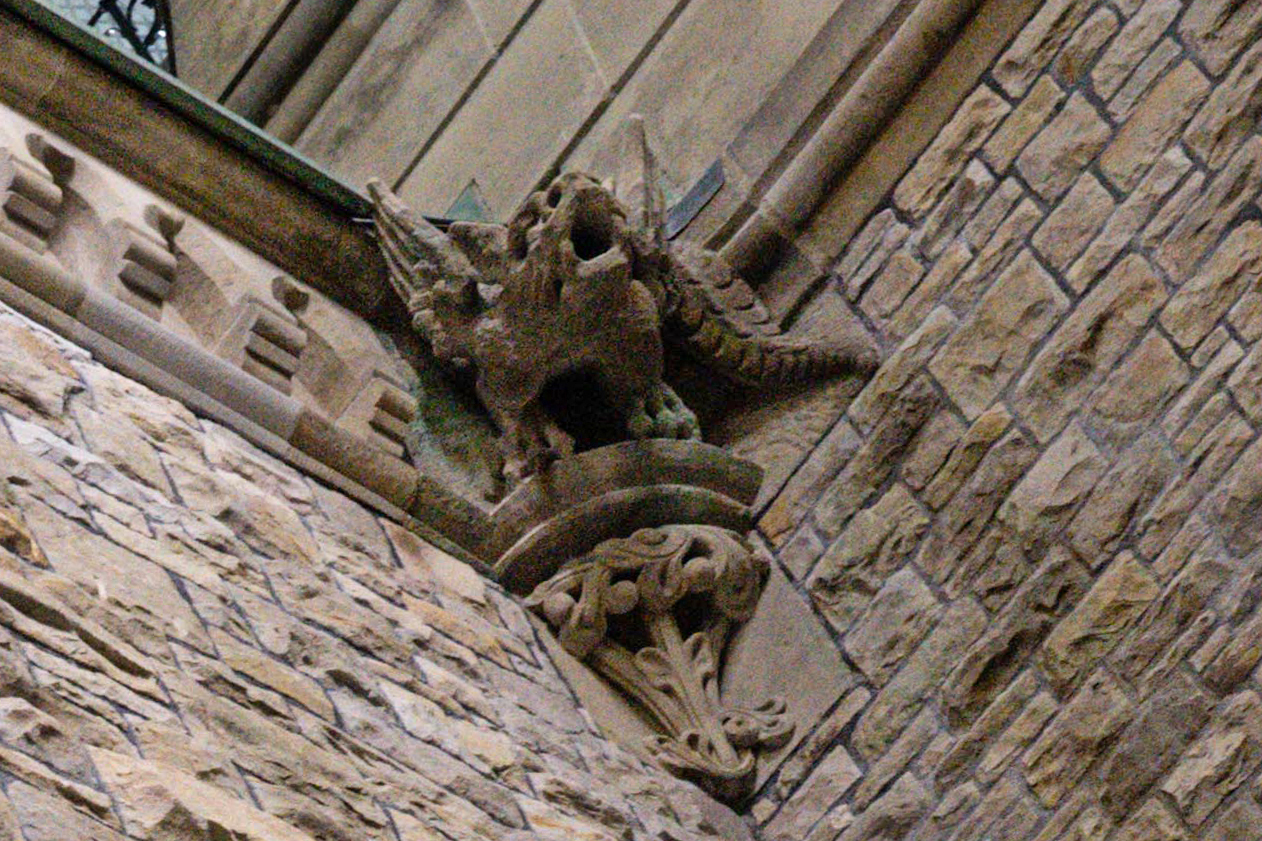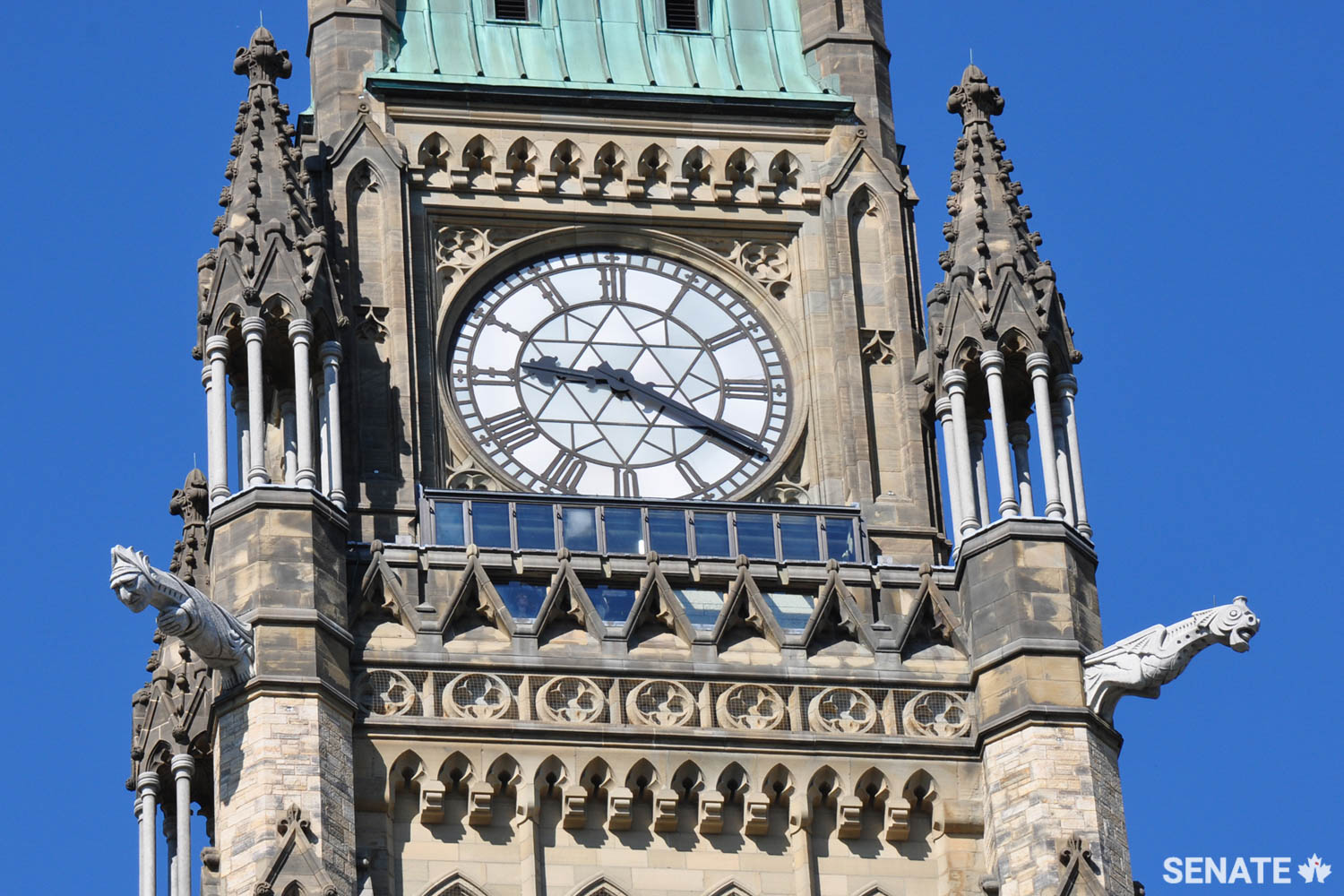Gargoyles and grotesques: Parliament Hill’s sinister sentinels

In February 2019, the Senate moved to the Senate of Canada Building, a former train station built in 1912. The Senate will occupy this temporary location while Parliament’s Centre Block — the Senate’s permanent home — is rehabilitated.
Although Centre Block is shuttered for rehabilitation work, Canadians can still experience its art and architecture through the Senate’s immersive virtual tour.
They lurk in the shadows wherever you go on Parliament Hill, snarling, scowling and brandishing their claws.
Whatever you call these misshapen creatures — gargoyles, gremlins, demons, dragons, harpies, hunky-punks — these carvings, in all their exotic variations, are one of Parliament’s more bizarre architectural features.
Collectively they’re known as grotesques and their pedigree traces back to the Middle Ages.
Most people refer to them as gargoyles, but that term actually applies to a specific kind of grotesque.

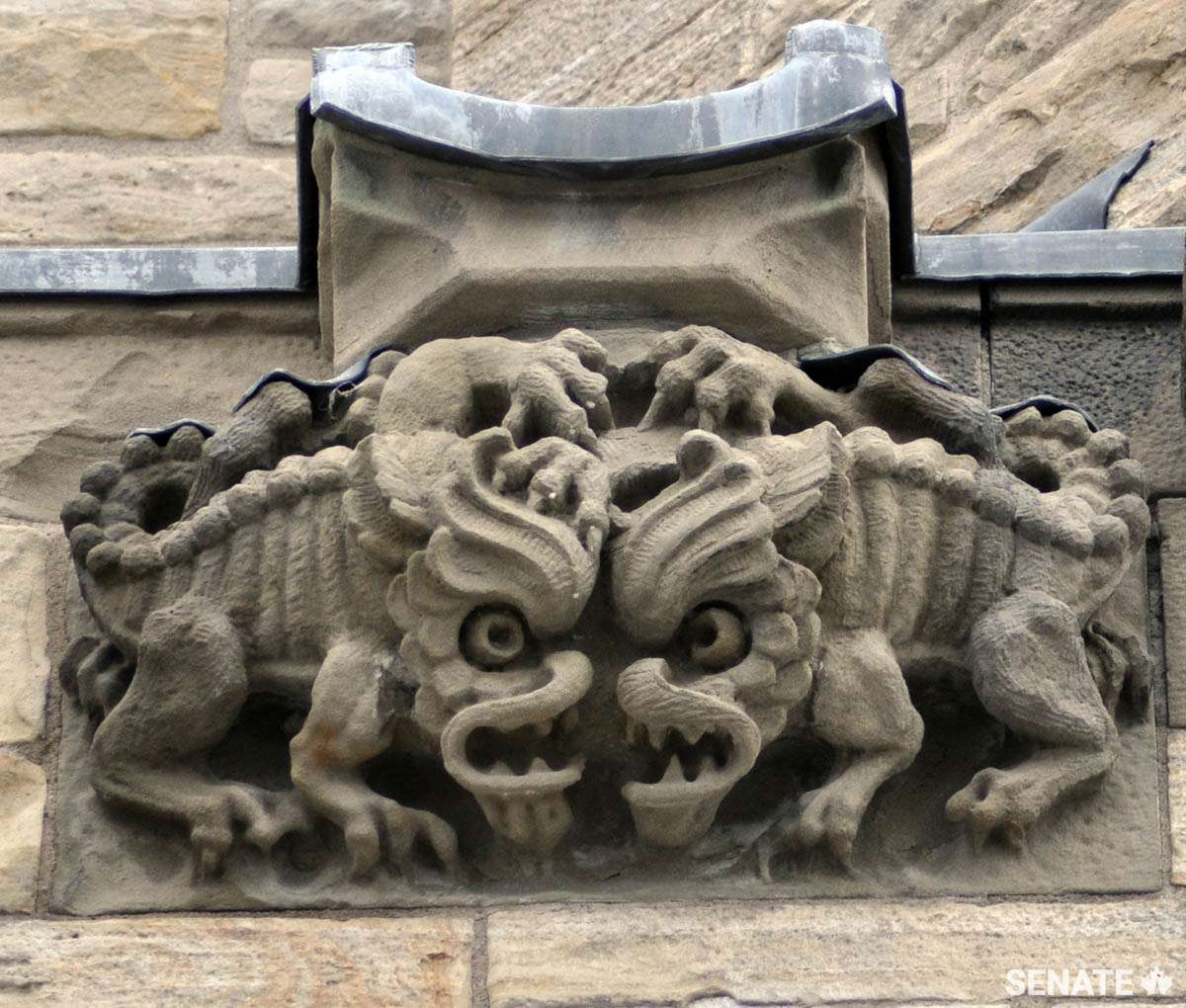
“A gargoyle is a waterspout,” said Johanna Mizgala, Curator of the House of Commons. “Gargoyles project from a building, with their open mouths acting as drainpipes. Rather than leave them unfinished, medieval sculptors carved them into fanciful, mythological creatures.”
“Not all grotesques are gargoyles, but all gargoyles are grotesques.”
The grotesques on Parliament Hill, crafted in the mid 1800s and early 1900s, were inspired by carvings that began to appear on English and French cathedrals in the late 1100s: bat-winged vampires, fish-tailed dragons and vulture-headed demons perched menacingly on towers, buttresses and doorframes.
“In the Middle Ages, they were moral signposts for an audience that was mostly illiterate,” said Dominion Sculptor Phil White, Parliament’s official carver.
“They were representations of the evils that lived outside the church — pagan deities, sexual temptation, bandits, murderers, disease and chaos — and a reminder that going to church would help rid you of these demons on your back.”
“Grotesques are about storytelling,” Ms. Mizgala said. “This was a time when life expectancies were short and illness was very prevalent. There was a lot of darkness in the world.”
“That mixing of the fanciful, the strange and the weird was a way to tell stories that either took the pressure off or made them fantasies.”
“They’re like today’s horror movies — a safe space to go and get scared silly.”
They may also have served a defensive purpose by representing the very things they were meant to ward off — “vanquishing them by wrestling them into a stone form,” as Ms. Mizgala puts it.
Grotesques became a less conspicuous architectural feature during the 1500s but returned with a vengeance 250 years later with the Gothic Revival, when French and English architects and historians cultivated a new appreciation for the architecture of the Middle Ages.
“For Canadians as well as Britons, the Gothic Revival expressed ideals about order and good government, about taming the landscape and pulling together to achieve great feats of spectacular architecture that rise from the earth and show that men are capable of great things,” said Ms. Mizgala.
In the 1800s, churches and government buildings in Britain were constructed almost exclusively in the Gothic Revival style.
This approach was quickly adopted in Britain’s colonies, including Canada, where a trio of government buildings were completed for Confederation in 1867.
Historic 19th-century grotesques survive on the East Block and West Block buildings. However, the original 1867 Centre Block building burned down in 1916.
The edifice that took its place in 1920 was taller, grander and even more elaborately carved.
Its horde of grotesques includes four perched above the entrance to the Senate Chamber, one with poised pen and a scroll in its lap, another wielding a hatchet.
The Peace Tower bristles with grotesques as well. Four granite giants, each twice the size of a man and considerably heavier, stick out from the tower from a dizzying height of 70 metres.
Generations of Parliament Hill carvers have put their own twist on their work. Parliament’s grotesques — often wry, smirking and lighthearted — are considerably less puritanical than their brooding medieval predecessors.
“Much of the work on Parliament Hill seems to have been done very whimsically,” Mr. White said.
“Some of these carvings are quite overt in their message and some are less overt.”
“The vast majority of them are just the carvers having fun.”
